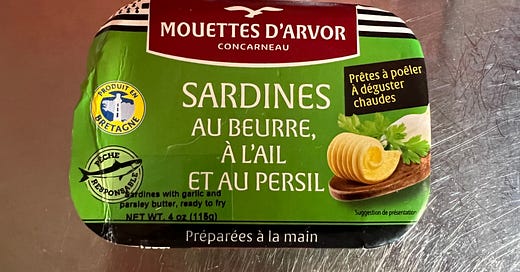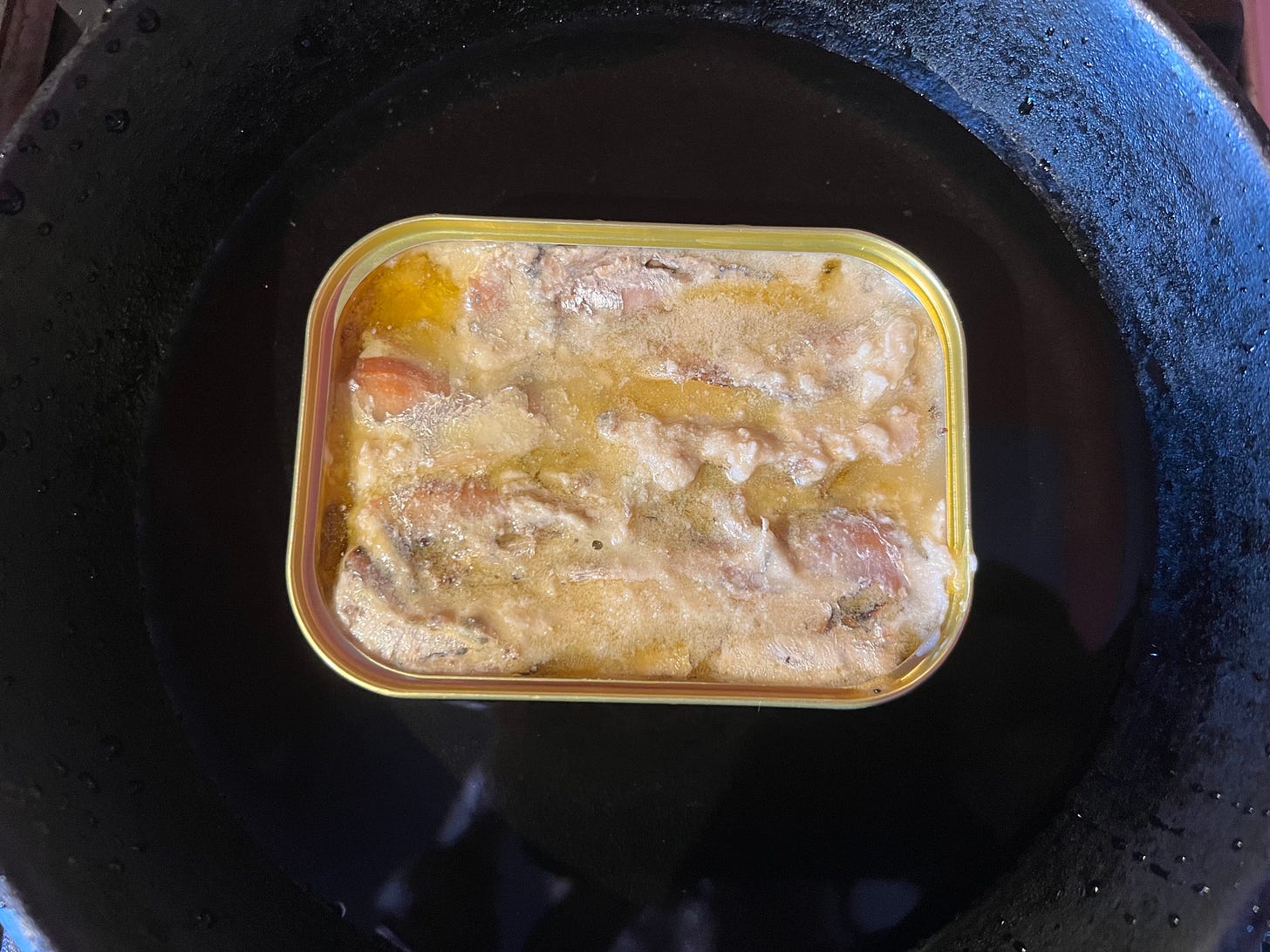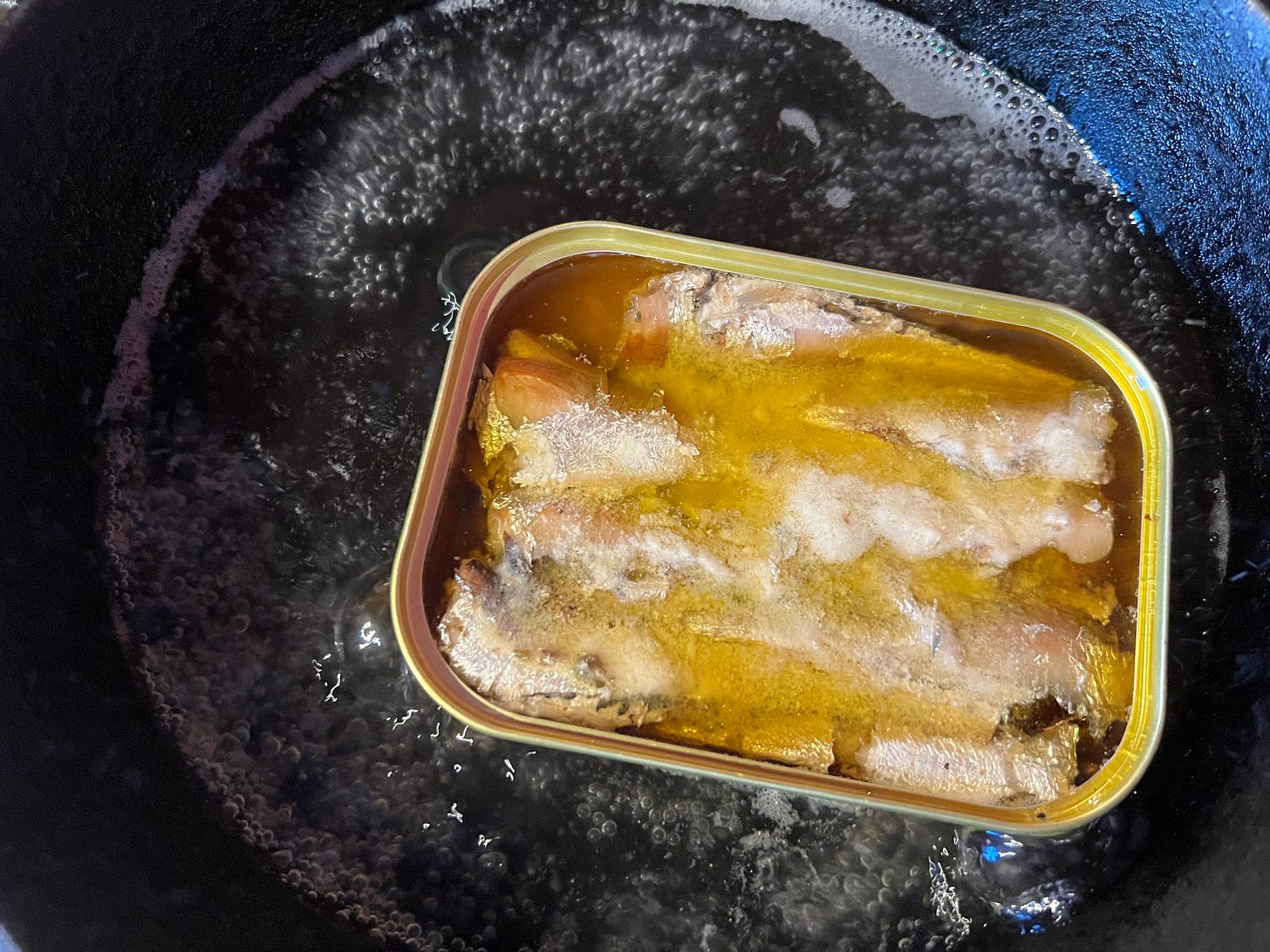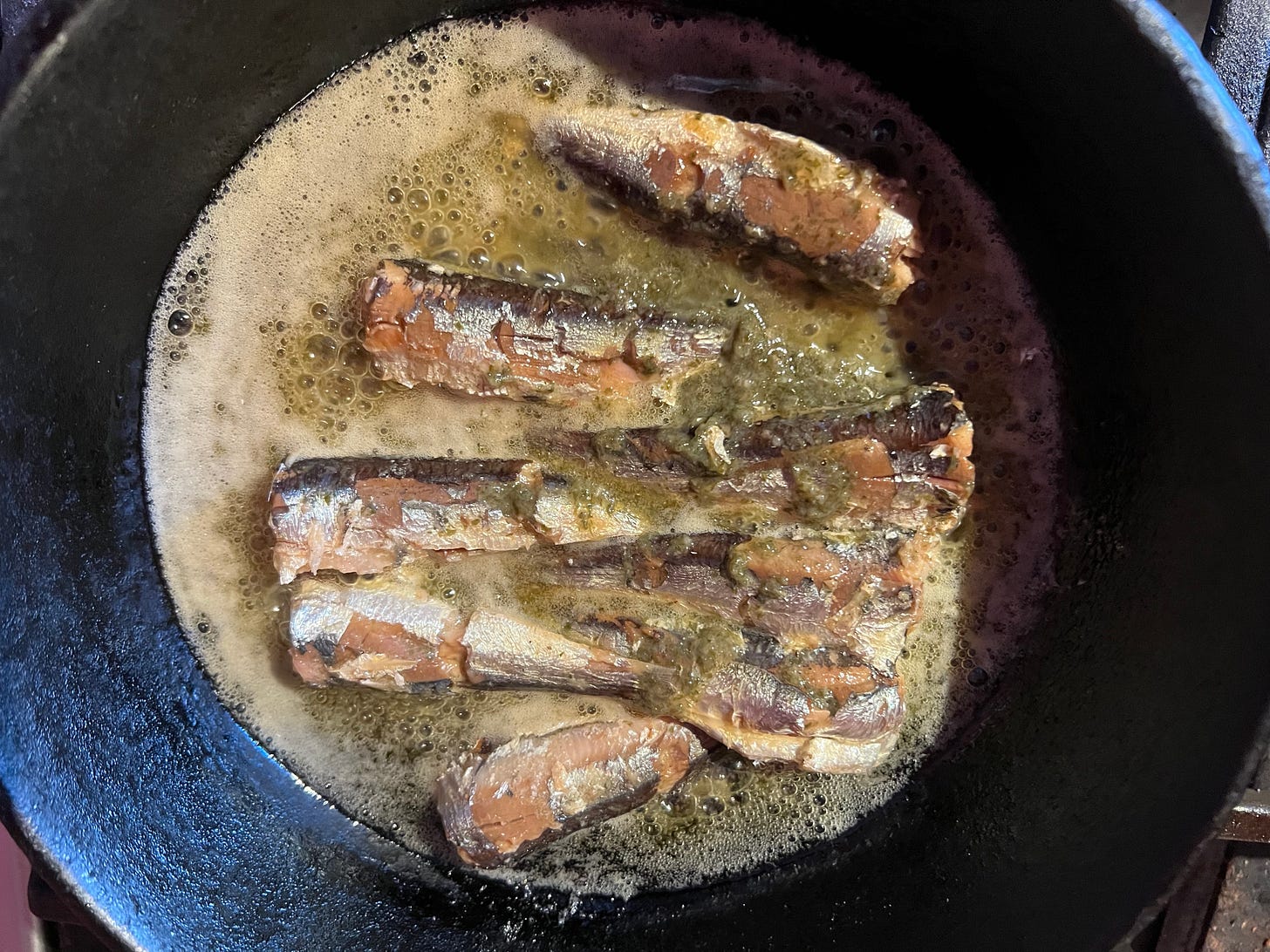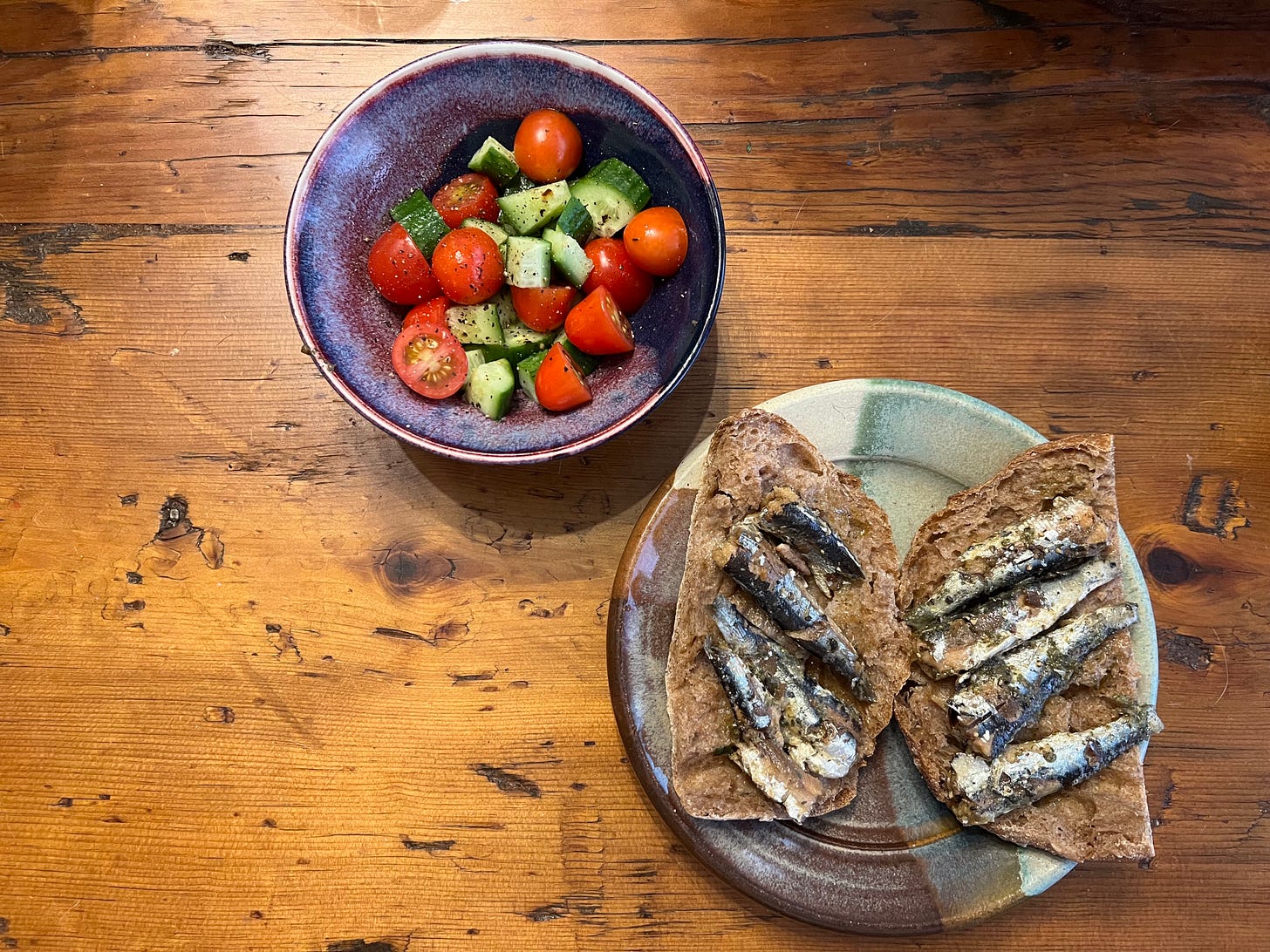A general principle of mine is that you shouldn’t cook, or do much to, tinned seafood. (If you’re in the mood to cook something, it usually doesn’t make sense to cook something that’s already been cooked and doesn’t require you to dirty a pan.) One exception is Les Mouettes d’Arvor sardines with persillade, which you can buy here. They’re nearly perfect. (All of the sardines I’ve had from this company have been excellent and if a tin looks good it probably is.)
Sardines offer lots of protein, calcium, vitamin B12, good fats, etc. with relatively little mercury and relatively few calories, cheaply, making them, in all, a near-ideal complement to an otherwise largely vegetarian diet and consequently prized by, among others, pescetarians, weight lifters, wellness enthusiasts, and cheapskates. All of this gives them virtuous connotations and something of an air of abstemiousness. They can be an indulgent food, though, and are especially good when they’ve been soaking in butter and pureed garlic and parsley.
While these aren’t difficult to prepare, they do take a little work, which is the worst thing about them.
When you open this can, you see something unappetizing—silvery blobs suspended in congealed grease. To come to their maximum potential—expert tinned-seafood purveyor Dan of Rainbow Tomatoes Garden has an excellent post about this here—these need to be heated in the tin, because if you just scrape the contents out you’ll make a mess and risk breaking the fish up. I don’t see any reason you couldn’t use a toaster oven to do this, but I use a stovetop method.
First you take the lid off, to avoid any risk of the thing bursting; then put it in a small pan (I used a cast-iron one but anything is fine) over medium heat and fill the pan with water, up to a bit below the rim of the tin. Let it go for a minute or two, until the butter has melted, but there’s no need to let it sit; you’re just heating these, not cooking them.
Once the butter has melted and you’ve given it a second to heat, you come to the trickiest part of the operation. The metal in the tin will be too hot to touch directly, and the precious persillade in it will be on the verge of brimming over, so that you need to be very careful about transferring the whole thing onto a plate. I use tongs but you could probably do it with a knife. With the tin on a plate, dump the water in the sink and put the pan back on the heat to dry out; when it’s done, gently tip the tin into the pan, easing the sardines out with the edge of a fork but taking care not to break them in half by using too much force. (You want them to just slide out.)
Once they’re in the pan they just need a minute or two, depending on how you’d like them; remember again that you’re more gently warming them than frying them, unless you’d like to do that, in which case you should, because it’s probably good. Then they’re done.
These are exceptionally versatile in terms of what you can serve them with; the only real parameter is that you want something that will soak up the excess persillade when you pour it out of the pan. They’d go great on either firm dark lentils or burst red ones, on boiled new potatoes, on rice, on pasta finished in the pan and/or tomatoes and mushrooms sautéed in it, on a baked sweet potato, or in a bowl with hunks of warm, crusty bread. Earlier I had them on warm flatbread with big squeezes of lemon juice—these really soak up acid, and you should be sure to finish with something sharp; I’ve been thinking about a blackberry compote—and gave them a bit to let the butter really soak into the nooks and crannies. It was great.
These are very earthy and intense sardines and they may not be your favorite if you usually prefer firm and mild ones, though on the other hand they may be.

